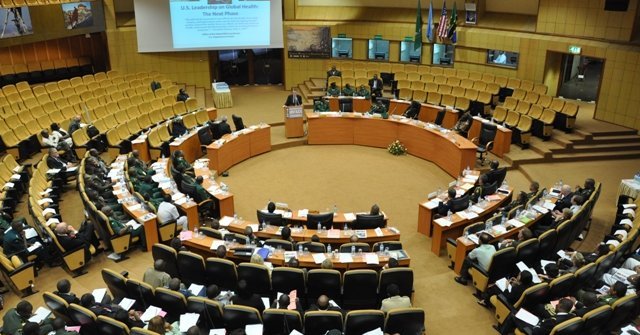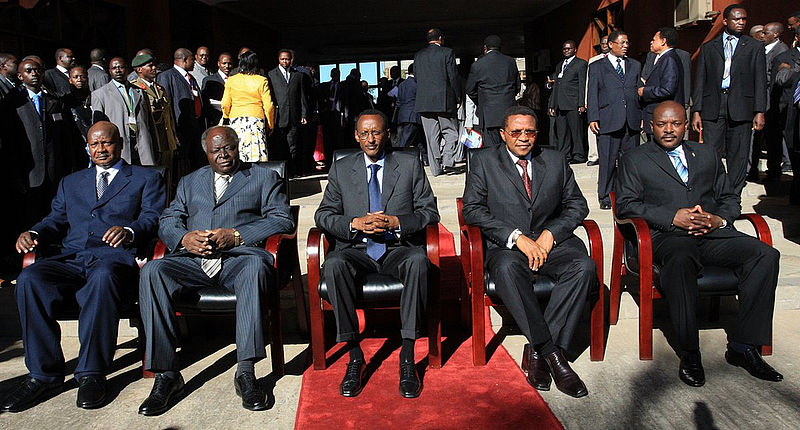Developing the East African Community
The idea of regional integration is not new in East Africa and dates back to the early 20th century. The most serious effort started in 1967 when the East African Community was formed. However, ten years later the community broke down over political and ideological differences. At the beginning of the 1990s, new integration efforts started that eventually led to the treaty for the establishment of the EAC and entered into force on 7 July 2000 following its ratification by the original three partner states – Kenya, Uganda and Tanzania. In 2007, Rwanda and Burundi joined as well and today the EAC comprises five countries with 140 million people. The headquarters are located in Arusha, Tanzania, and the EAC’s mission is to “widen and deepen economic, political, social and cultural integration in order to improve the quality of life of the people in East Africa through increased competitiveness, value added production, trade and investments.”
Moving Forward is Slow and Difficult
After signing a customs union treaty in 2004, key aspects of this customs union include a common external tariff on imports from third countries, duty-free trade between the member states as well as common customs procedures. However, the customs union still include many exceptions and is thus not fully implemented yet. In 2010, the EAC’s finally established their own common market for goods, labour and capital within the region. Advantages of the common market will include the waiver for work permit fees for EAC citizens, the introduction of internationally recognized ID cards to be a citizen of the home country and the EAC, as well as the mutual recognition and accreditation of higher education institutions. So far, a lot of practical challenges remain in all these areas. Some countries are already ahead in some areas, particularly when they see a comparative advantage for themselves but block any progress when they see no benefits for themselves.
A Regional Monetary Union
Still, the EAC has stated the objective to form a monetary union proposing to introduce the East African Shilling. The suggested target date in a fast-track currency union proposal is 2012. It will be difficult though to obtain the date as the EAC countries would need a period of monetary policy coordination prior to a monetary union. This is not the case yet and therefore analysts remain skeptical about the timing of the common currency plan as well as its viability. They question the feasibility of the 2012 target, warning that the implementation of a monetary union is a challenging and convoluted process. Ultimately, the EAC intends to achieve a political federation by 2015. By then, Arusha should become the capital of the federation and one single president should preside over the area.
The United States of East Africa
To achieve a full federation, also a common constitution should come into force according to EAC plans. The EAC will table its recommendations for the proposed constitution in the forthcoming East African Heads of State Summit which convenes in November 2011. The process of drafting the constitution for the United States of East Africa would start “anytime soon” after the East African Monetary Union protocol is signed. In the end, the EAC citizens will hold a referendum over the proposed constitution before coming into force.
The advantage so far is that the EAC countries are geographically close-by and share to a certain degree a common language and culture. Small steps have been taken to enhance the integration of the region include the launch of the East African passport, the establishment of the East African Business Council and the adoption of the East African flag and anthem. It has to be remembered that the framers of the EAC treaty put the private sector and the civil society at the centre of advancing the region’s integration. However, many citizens do not feel part of the integration process.
Further Expansion in the Future?
The EAC is also attractive for other countries in the area. Africa’s newest nation, South Sudan, wants to join the EAC. During a recent visit to Uganda, South Sudanese President Salva Kiir reiterated his country’s commitment to join the EAC “to reap the benefits of regional integration.” But the EAC wants to expand even further. Recently, Somalia was suggested as another member in Kenya’s widely read and influential Daily Nation. Also other countries like Ethiopia and the Republic of the Sudan might be invited as the Democratic Republic of Congo (DRC) is keen to join and so is Eritrea. The more the EAC would expand, however, the more the plans for further integration would be challenged as differences between member states would threaten the plans of a federation.
Don’t Forget the Citizens
While 2012 remains the target for a single currency, many obstacles still need to be overcome, including the harmonization of economies and regulatory practices. Yet is mainly the mobilization of political from the political actors to move the agenda forward. One group of people is, however, often forgotten in the process about integration: the EAC citizens. So far, the EAC integration is a project of the political elite. While EAC citizens are largely in favor of a federation, they are not involved in the process and not very much aware of how the regional framework works. This might not come to a big surprise as many people in the region have difficulties to get enough food or sleep in nice beds; so how can they think about integration?
The Dream of a Federation
The pan-Africanist Nkwame Nkrumah argued in the 1950s that African countries should right away integrate politically with his famous saying “seek ye first the political kingdom and all the rest will follow.” However, the majority of African countries rejected Nkrumah’s visionary ideas because sovereignty and protectionism was considered more important. Also today it is difficult to see how the East African region can move towards a federation until 2015. Structural and institutional obstacles to the free movement of capital, goods and people remain as some partner states still practise market protectionism. At least the time of political turmoil seems to be over: the Lord’s Resistance Army was driven out of Uganda (but still continues its atrocities in the Central African Republic and in the north-eastern DRC), Kenya’s new constitution nourishes hope that the next general elections in August 2012 will be peaceful, Rwanda’s security situation has improved a lot and also Burundi is more stable.
The great dreams of a continental African union, which were articulated by pan-Africanists like Kwame Nkrumah and Leopold Sedar Senghor, would come closer by smaller regional federations like an East African federation. Nkrumah and Senghor saw the continent’s future through a global perspective and envisaged a united and self-sufficient Africa as the ultimate objective. The regional integration of East Africa is a step towards this vision.



1. On 31 May 2012 at 03:13, by Paull Replying to: The Path Towards the United States of East Africa
Replying to: The Path Towards the United States of East Africa
Very intersting article. Well written and concise! Keep up the good work
Follow the comments: |
|
